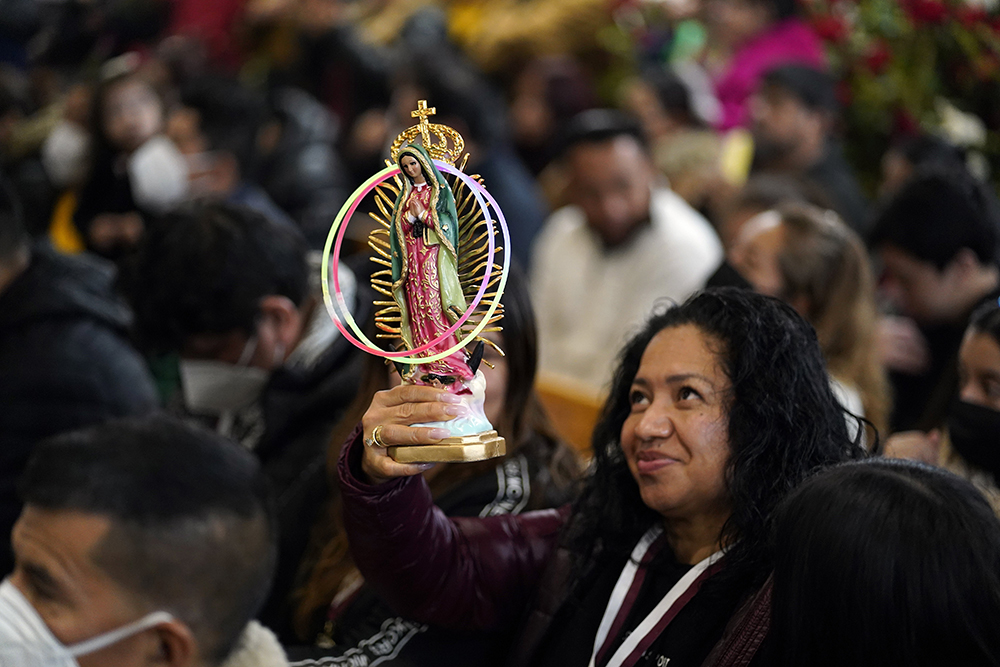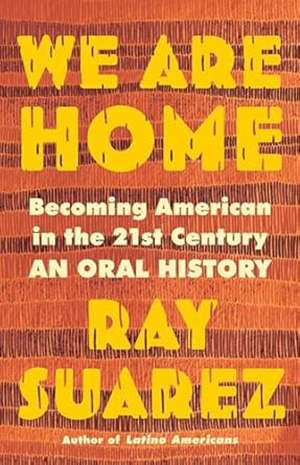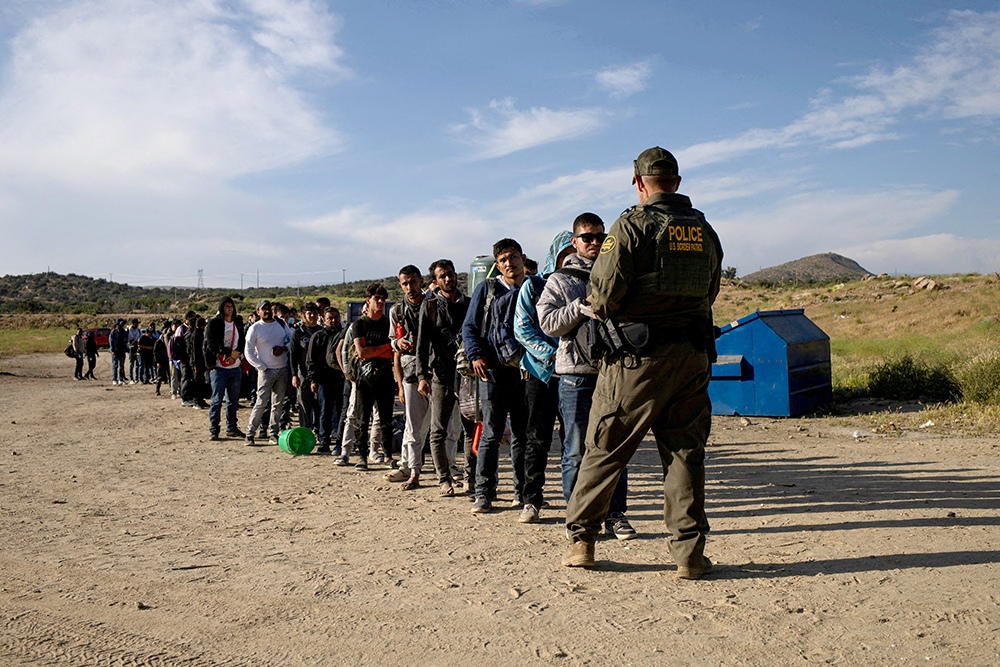
A woman holds a statue of Our Lady of Guadalupe during a Spanish-language Mass celebrated on the eve of the feast of Our Lady of Guadalupe at Our Lady of Mount Carmel Church in Staten Island, New York, Dec. 11, 2022. (OSV News/Gregory A. Shemitz)

In a time when immigration is one of the most controversial issues in the United States, We Are Home: Becoming American in the 21st Century: An Oral History by Ray Suarez reminds us of two key things: the shared humanity that unites those seeking a home in a land that sometimes seems to reject them, and the essential role the Catholic Church can play in their challenging quest.
Ray Suarez, an author and journalist with over three decades of experience in media outlets such as NPR and PBS, has focused particularly on issues of social justice, immigration and cultural diversity, using his platform to give voice to the experiences of marginalized communities in the United States.
Within the context of his broader work, We Are Home stands out as a significant contribution that not only documents the migratory realities from Latin America, Asia, Africa and Europe to the United States, but also challenges institutions — including the Catholic Church — to respond with maturity and responsibility to these complex realities.
Advertisement
With remarkable investigative rigor, Suarez meticulously traces the footprints of immigration — footprints undeniably etched into the history and culture of the United States. Through deeply human, personal and familial stories told by the protagonists themselves, Suarez captures these narratives in his book with a blend of sensitivity and professionalism. His method begins with direct dialogue with the people he interviews, who share their stories as immigrants. Then, he continues to engage with and reflect on these stories, illuminating them with a critical awareness from an integral perspective that encompasses economic, political, religious and social dimensions.
Beyond statistics and data, Suarez offers us glimpses into the daily lives of immigrants who face the uncertainty of building a new home. Through these intimate stories, the author humanizes a reality that is often oversimplified, revealing the complexities and nuances that define the migratory experience. He does not reduce the issue of immigration to numbers or categories; instead, he uncovers the emotions, sacrifices and dreams that accompany each individual and family in their search for belonging. These stories highlight not only the material challenges, such as the search for employment and housing, but also the emotional and spiritual struggles, like mourning what has been left behind, hoping for a better future and the transformations experienced in the process.
In doing so, Suarez invites us as readers to look beyond stereotypes and prejudices, reminding us that behind every immigrant is a unique story of resilience and humanity. These stories not only reflect the common struggles of all human beings but are also marked by specific challenges, such as displacement, adaptation to a new cultural environment and the reconstruction of a life in a place that is often hostile or unfamiliar. These experiences deserve to be heard and understood in all their complexity.
Suarez invites us as readers to look beyond stereotypes and prejudices, reminding us that behind every immigrant is a unique story of resilience and humanity.
For these reasons, We Are Home is a deeply relevant book for the Latinx Catholic community in the U.S. Through the exploration of the struggles, challenges and contributions of immigrants, this book underscores its importance by showing how these stories incubate within themselves the potential for a prophetic social transformation, reflected in the resilience of those who come to this country with the capacity to shape its future.
However, this change will only be possible if we can recognize and understand the facts that characterize this reality. As Suarez notes: "Those young Latinos have had such an enormous impact on the Catholic Church that their presence in pews and on parish rolls helps paper over the rapid decline in observance among native-born Catholics."
Reading this book from a Catholic perspective raises fundamental questions. What are we as a church failing to see in the waves of migration? What role does religion play in the fabric of a society that is being shaped and transformed by immigration? How can a church fragmented by exile become a church integrated by immigrants? What does this mean? And when we come to understand it, how can that understanding impact the future of this country?

Migrants from Jordan, China, Egypt and Colombia surrender to a Border Patrol agent after crossing into the U.S. from Mexico in Jacumba Hot Springs, California, May 15, 2024. (OSV News/Reuters/Adrees Latif)
Suarez reveals this panorama before our eyes:
One in four children in the US has at least one immigrant parent. An overwhelming majority of the children with one immigrant parent, 88 percent, are American citizens themselves. Six million people defined as immigrants are students, from kindergarten through college. Three-quarters of the adult immigrants in the US hold high school diplomas or their equivalents from other school systems. Of the more than 44 million foreign-born individuals living in the US, roughly 80 percent, 36 million in all, have lived in the country for more than ten years.
We Are Home is a powerful reminder for the Latinx community of their vital role in both the church and American society. With a migrant community that is constantly growing, especially among Latinos, the church faces the challenge of reaffirming its commitment to those who find themselves on the margins. In an increasingly xenophobic and hostile environment, the church's mission not only remains relevant but is absolutely indispensable.
We Are Home can be an invaluable resource for the migration ministry and church leaders. By incorporating these statistics and narratives into parish education and community discussions, the church can challenge prejudices, promote a necessary culture of welcome and design programs that effectively respond to the real needs of migrant communities.
This book provides the necessary tools to illuminate the path toward greater understanding and informed empathy about migration, thereby supporting ecclesial communities in their mission of justice and solidarity.





